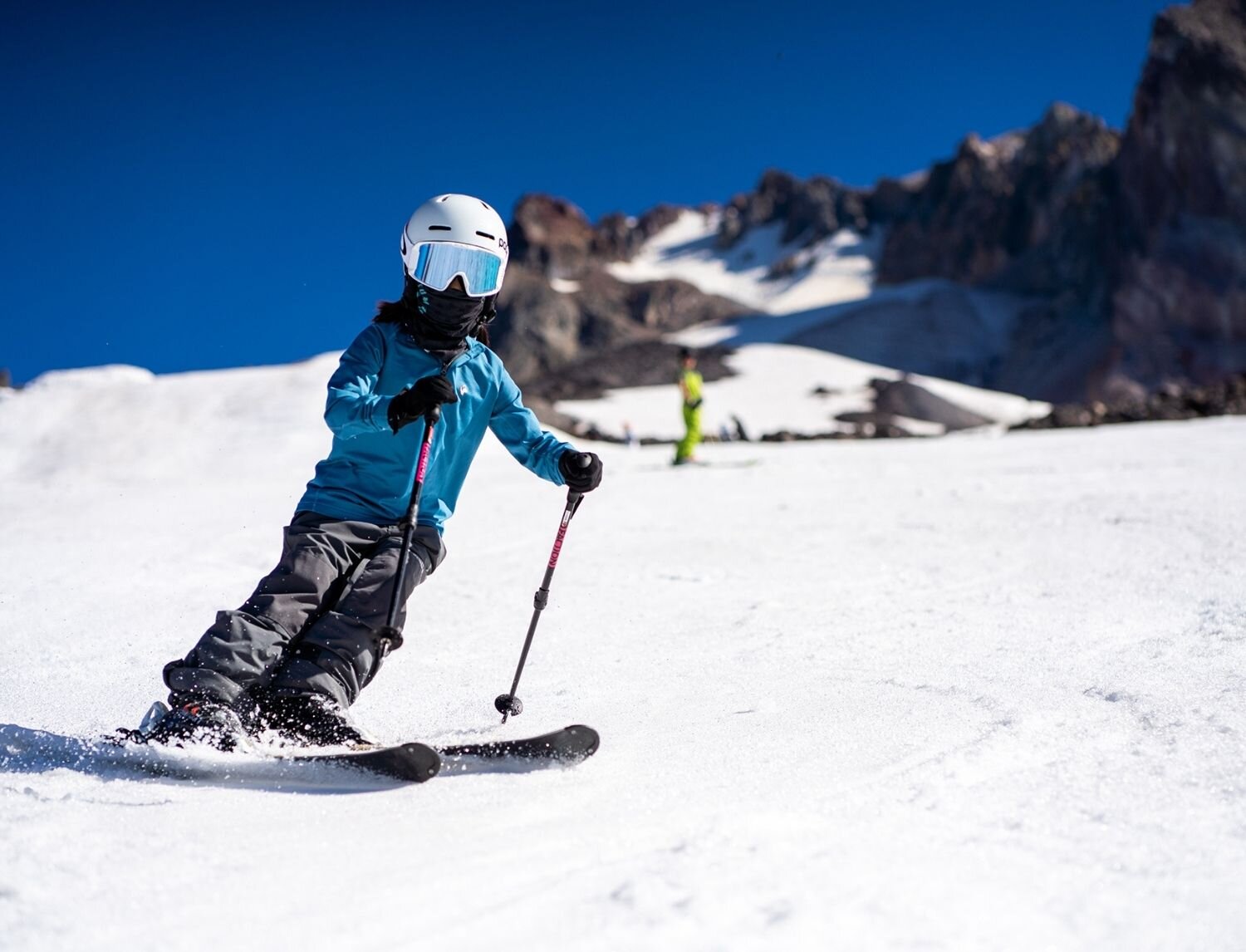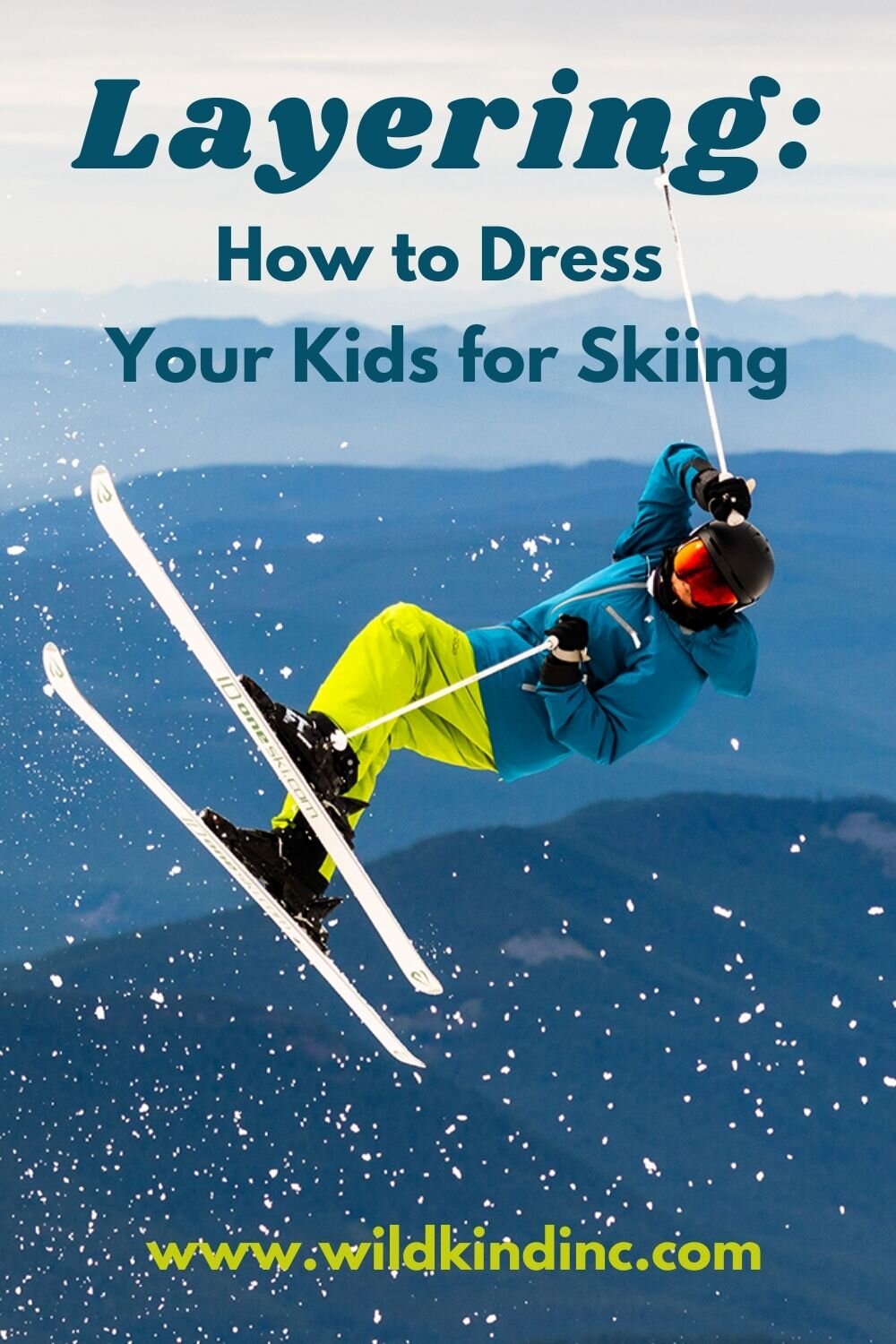Layering: How to Dress Your Kids for Skiing
Every parent knows the key to any adventure with kids is snacks. Copious amounts of snacks. At WildKind, we think an efficient layering system is a very close second, especially for a long day on the slopes.
How many layers you use matters, because it’s as important to keep your kids from overheating as it is to keep them warm. We suggest having three layers ready to go at all times: a base layer (to wick moisture), a mid layer (to insulate), and an outer layer (to protect from the elements). Using a layering system lets you make on the fly adjustments as activity level and conditions change.
When searching for layers, keep in mind that every piece should either keep your child warm or dry (or both). If it’s not an absolutely yes it will, then find something else.
Once you have your kids’ layering system dialed in, don't forget to check out the WildKind x Aspen Snowmass Virtual Ski School so you can put your kids’ layers to the test on the slopes. Oh, and don’t forget the snack bag. Happy skiing!
Base Layer: Breathable, Lightweight, Moisture-Wicking
A base layer has the most important job: to move moisture (sweat or snow) away from your child’s body. Doing this helps regulate their body temperature and keep them comfortable. You may have heard of base layers referred to as “long johns”, “long underwear”, or “thermals”. Regardless of what you call them, base layers for skiing consist of a long sleeve top and pants, as well as socks.
If their base layer doesn’t keep them warm and dry, your child will get wet, which means they will get cold. Wet and cold do not lead to epic days on the mountain.
When shopping for base layers, look for these key phrases: lightweight, breathable, and moisture-wicking. Choose base layers made of materials like wool and polyester, not cotton. The material should stretch to allow freedom of movement.
Make sure the base layer fits your child’s body. While it’s tempting to size up to get more use out of them, keep in mind your kids will usually wear their base layers under other clothing, so they should fit relatively tight to their bodies.
Want our free winter checklist packed full of gear recommendations that our team of moms loves?
The same rule for base layer tops and bottoms apply for socks: no cotton. Look for a merino wool blend or nylon instead.
When shopping specifically for socks for skiing, they should extend higher than the top of your child’s ski boot. If you purchase a pair of quality ski socks you will not need to have your kids wear more than one pair of socks, so make sure they fit snug.
Mid Layer: Insulation
Once you have found base layers that fit your kids and keep them dry, you need to focus on the layer that will keep them warm: the mid layer. The most common materials for mid layers include fleece, down, a down alternative, and wool. Once again, stay away from cotton.
On warmer days, your child can get away with only wearing a mid layer on top. It may not be cold enough to warrant a pair of fleece pants in addition to a base layer and bibs. Or, you may choose to purchase highly insulated ski bibs. However, it’s not a bad idea to pack a bottom mid layer just in case. Top or bottom, your child’s mid layer should fit snug, but not so tight that it restricts their movement.
Outer Layer: Breathable, Waterproof, Windproof
The outer layer is your child’s first layer of protection from the elements. Whether they’re skiing on a cold, bluebird day, or out for a run in a storm, your kids need a high-quality outer layer, usually in the form of a hardshell on top and bibs on bottom.
When searching for the perfect hardshell, keep in mind that your child will be wearing 1-2 layers underneath it, so it should have a baggy fit. Look for waterproof and windproof materials, as well as products that advertise breathability.
Other features to consider: taped seams, waterproof zippers, helmet compatible hoods, powder skirts, underarm vents (“pit zips”), cinching wrists, and high collars. As with all aspects of life, big zipper pockets are a big plus. Look for shells that have pockets large enough to fit your kid’s ski gloves inside - bonus if their goggles fit too!
Shopping for bibs follows similar guidelines. No pit zips this time, but thigh vents come in handy. So do reinforced knees, adjustable bottom cuffs and shoulder straps, and built in gaiters with grippy elastic.
Gloves also fall into the outer layer category. The perfect ski gloves for your child will keep them warm and dry, bonus points if they can put them on themselves.
Mittens will keep your kid’s hands warmer, because they group your kid’s fingers together. However, not all kids like to sacrifice the control they have in gloves (individual fingers). In this case, go with their preference, because what matters most is they wear them without a fight.
Whatever kids wear on their hands needs to be waterproof, easy to put on, and cinch down tight around the wrist to keep out snow.
Test Out Your Layers
Once you have your layering system dialed in, now the fun begins. Before hitting the slopes, it’s a great idea to do a trial run with their layers. Practice putting them all on in the right order, or determine what that order is. For my youngest that means gloves before hardshell. The older one can handle it either way. Work out the kinks at home to minimize meltdowns (your’s or their’s) at the resort.
Now it’s time to hit the slopes and test them out. Remember that every child is different, so one may need to wear a mid layer in warmer conditions than another. There’s no rigid temperature cut off for these layers, so experiment a bit and remember to have fun.







